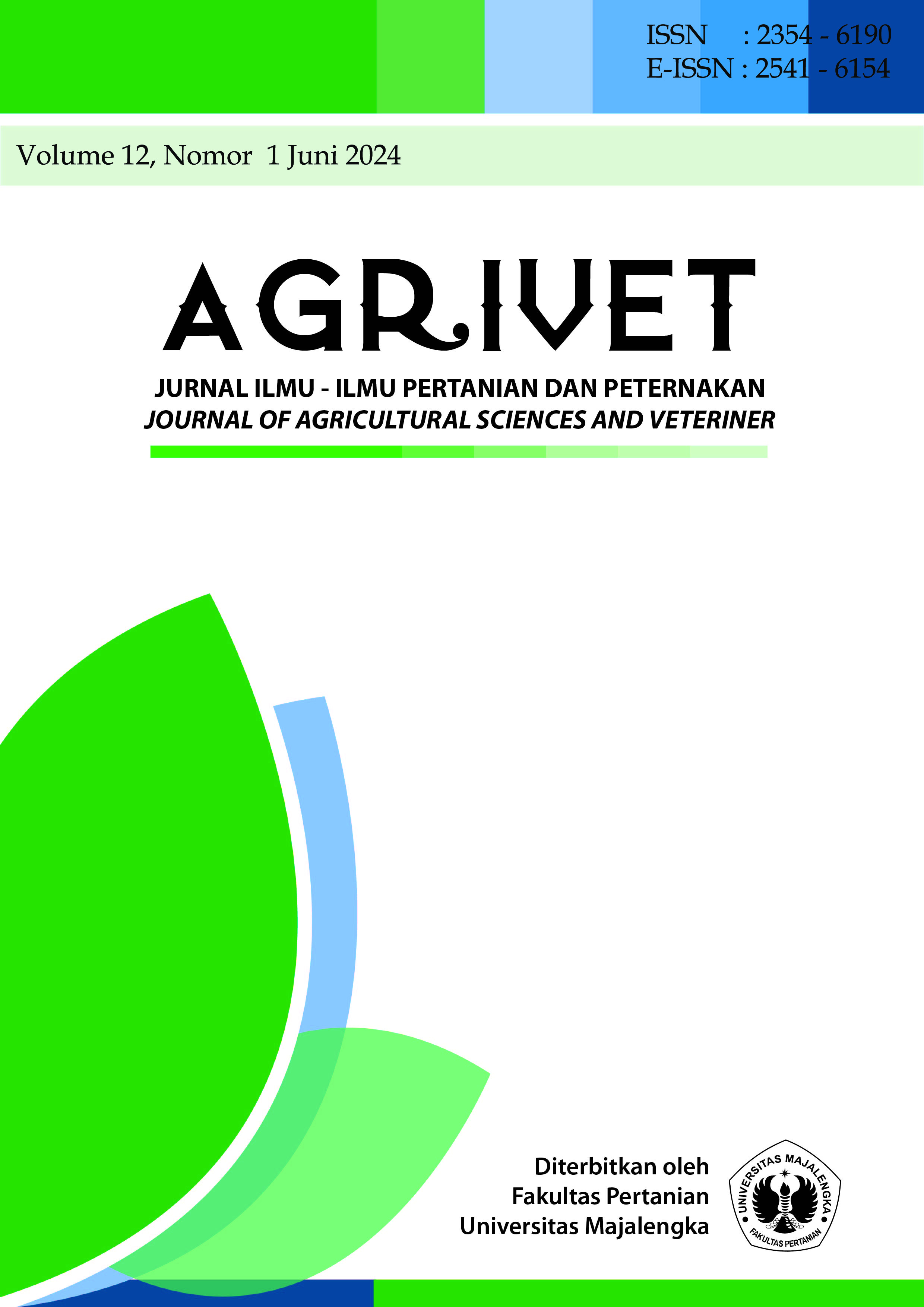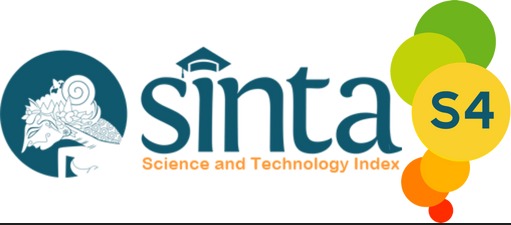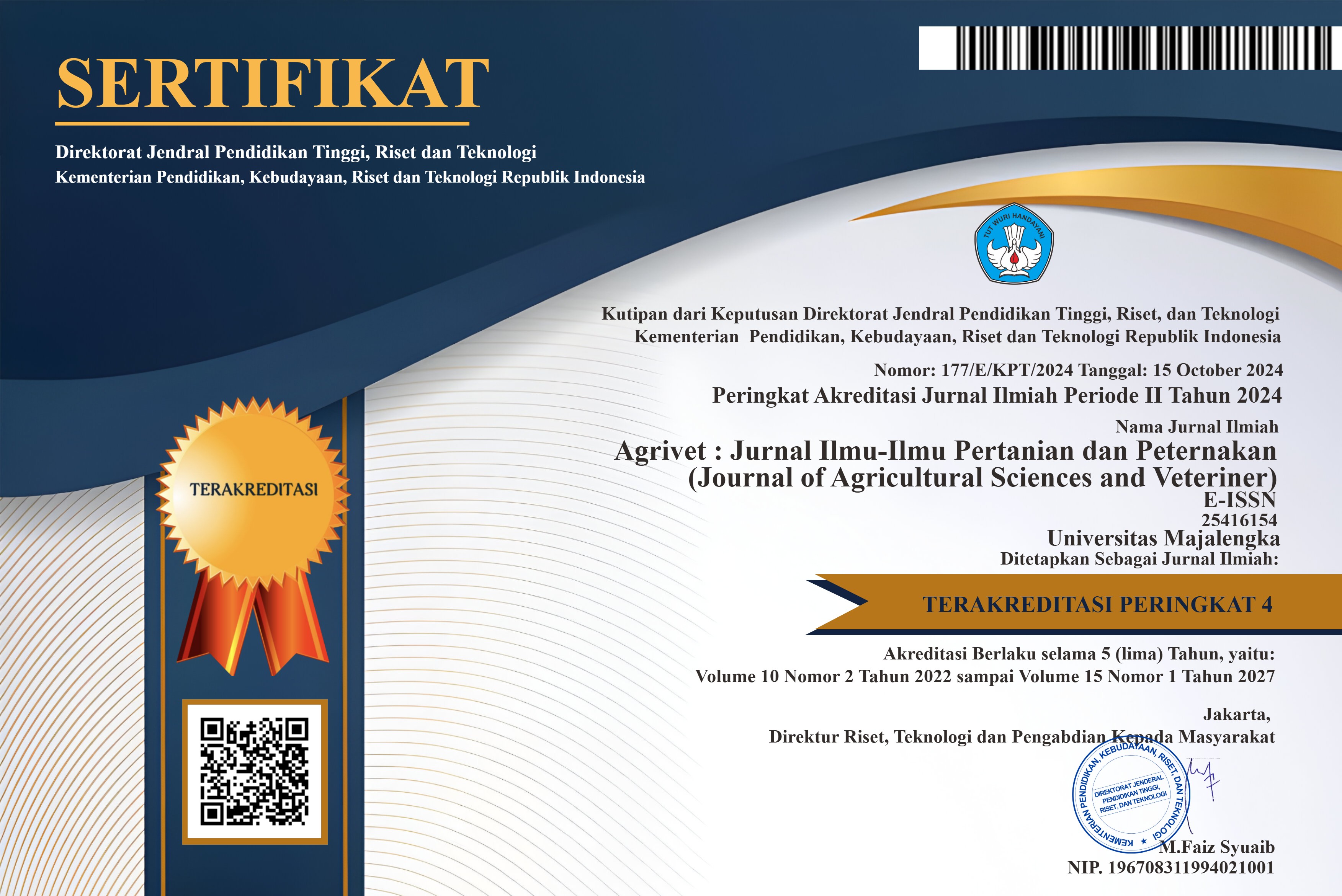Kualitas fisik dan sifat organoleptik bakso daging sapi dengan Penambahan tepung oat (avena sativa)
DOI:
https://doi.org/10.31949/agrivet.v12i1.9620Abstract
Beef meatballs using tapioca flour only contain a small amount of protein, fat and fiber in them. The nutrition is very low, only around 0.1% of the daily recommendation. Therefore, there is a need for healthier alternative flour, one of which is oat flour. This research is a diversification of healthy meatball products made from oat flour which contains better nutrition than tapioca flour. The method used was an experimental study with a completely randomized design pattern of three treatments (substitution of tapioca flour with oat flour at 0%; 50% and 100%) which was repeated seven times. The variables observed were chemical quality (air, protein, fat, carbohydrates), physical quality (pH and cooking loss) and organoleptic properties (color, aroma, texture and taste). Data analysis used analysis of variance (ANOVA). If there is a significant difference between treatments, Duncan's further test is carried out. The results showed that the amount of oat flour had a significant effect (P<0.05) on the pH of the meatballs. The amount of oat flour linearly (P<0.05) reduced the level of meatball cooking loss. The organoleptic properties of meatballs with 50% oat flour are more similar to meatballs using 100% oat flour, and have slightly the same level of preference. It can be concluded that oat flour can be used as a substitute for tapioca flour to improve the physical and organoleptic quality of beef balls. Meanwhile, the ideal oat flour substitution rate is as much as 50%.
Keywords:
Meatballs, Oat Flour, Organoleptic Properties, Physical QualityDownloads
References
Badan Standarisasi Internasional. 2014. SNI 3818-2014. Syarat Mutu Bakso. Badan Standarisasi Nasional,Jakarta.
Bowers, K. K. 2005. Everything Oats. http://www.karenskitchen.com/
a/recipe_oat.htm. Diakses tanggal 8 April 2021.
Figoni, P. 2008. How Baking Works. Edisi 2. New Jersey.
Firahmi. N., S. Dharmawati dan M. Aldrin. 2015. Sifat Fisik Dan Organoleptik Bakso Yang Dibuat Dari Daging Sapi Dengan Lama Pelayuan Berbeda. Al Ulum Sains dan Teknologi Vol.1 No.1 Nopember 2015.
Hamaker, B. R. 2008. Technology of Functional Cereal Products. Woodhead Publishing Limited. Cambridge, England.
Lawrie, RA. 2003. Ilmu Daging. Universitas Indonesia, Jakarta.
Moorthy, S.N. 2004. Tropical sources of starch. In: Eliason, A.C. (ed.) Starch in Food: Structure, Function and Application . CRC Press, Baco Raton, Florida.
Oktaviani, J. 2018. Flakes dengan Bahan Dasar Tepung Terigu, Tepung Oatmeal dan Tepung Kacang Hijau sebagai Alternatif Sarapan Pagi. Skripsi. Politeknik Kesehatan Kementerian Kesehatan Yogyakarta. Yogyakarta.
Peterson, D. M. 2004. Oat-a Multifunctional Grain. Proceedings 7th International Oat Conference. http://www.mtt.fi/met/pdf/met51.pdf. Diakses tanggal 8 April 2021.
Pratiwi, AD. 2020. Penerapan Sistem Jaminan Halal Dan Kandungan Gizi Bakso Sapi Produksi Usaha Mikro Di Pasar Rasamala Banyumanik Kota Semarang Tahun 2019. Jurnal Kesehatan Masyarakat (e-Journal) Volume 8, Nomor 1, Januari 2020.
Rahardjo, M., R.W. Astuti, D. Puspita dan M. Sihombing. 2020. Efek Penambahan Oats pada Formulasi Cookies Gandum Dilihat dari Karakteristik Fisik dan Sensorinya. Media Informasi dan Komunikasi Ilmiah Teknologi Pertanian 11(1) : 1-6.
Rosita, F., H. Hafid dan R. Aka. 2015. Susut Masak dan Kualitas Organoleptik Bakso Daging Sapi dengan Penambahan Tepung Sagu pada Level yang Berbeda. JITRO 2(1): 12-20
Soeparno. 2009. Ilmu dan Teknologi Daging. Cetakan ke-4. Gadjah Mada University Press, Yogyakarta.
Trifana. 2020. Pengaruh Pelayuan dan Jenis Daging Karkas serta Jumlah Es yang Ditambahkan ke dalam Adonan Fisikokimia. Jurnal Peternakan Vol. 2(3):65-77.
Winarno, F.G. 1997. Kimia Pangan dan Gizi. PT. Gramedia. Jakarta.
Published
How to Cite
Issue
Section
License
Copyright (c) 2024 Aaf Falahudin, Rachmat Somanjaya Tifani, SP., MP., Dini Widianingrum, Robi Dianto

This work is licensed under a Creative Commons Attribution-ShareAlike 4.0 International License.
An author who publishes in the Jurnal Agrivet agrees to the following terms:
- Author retains the copyright and grants the journal the right of first publication of the work simultaneously licensed under the Creative Commons Attribution-ShareAlike 4.0 License that allows others to share the work with an acknowledgment of the work's authorship and initial publication in this journal
- The author is able to enter into separate, additional contractual arrangements for the non-exclusive distribution of the journal's published version of the work (e.g., post it to an institutional repository or publish it in a book) with the acknowledgment of its initial publication in this journal.
- The author is permitted and encouraged to post his/her work online (e.g., in institutional repositories or on their website) prior to and during the submission process, as it can lead to productive exchanges, as well as earlier and greater citation of the published work












